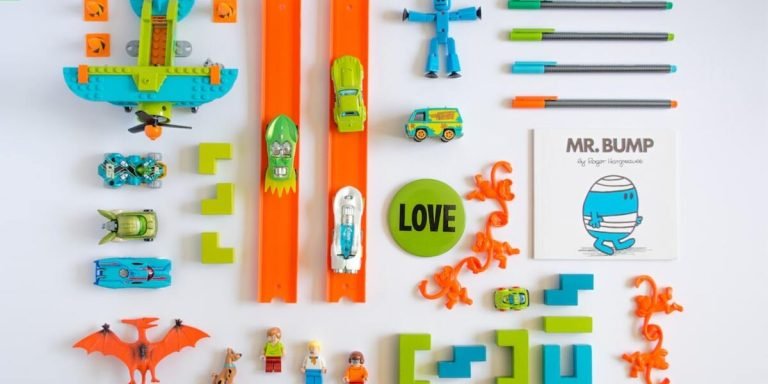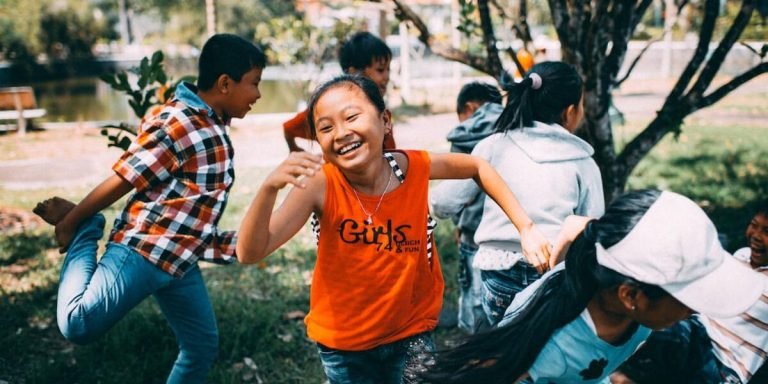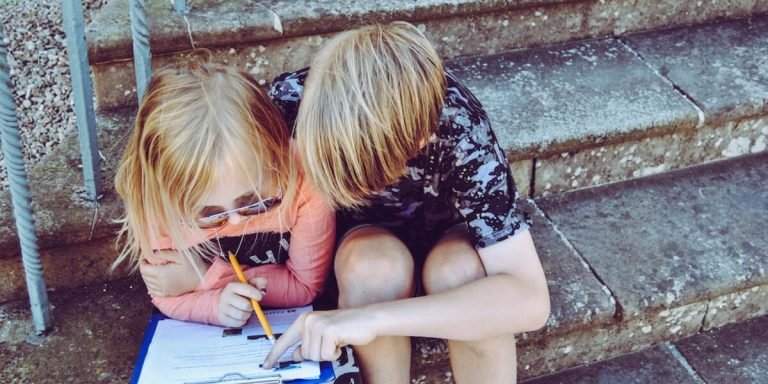Field Trip Essentials: A Guide for Successful Educational Expeditions
Field trips are not merely a break from the school routine but an essential component of children’s educational journey. Such excursions foster an environment for activity-based learning, leading to increased interaction and engagement among students. Whether it’s a visit to the zoo, museum or any local business organization, each field trip holds valuable lessons that help in broadening their perspectives.
However, organizing these trips can often be daunting for educators as they involve careful planning and preparation. Ensuring safety while also making them educationally rewarding is critical. This blog post – ‘Field Trip Essentials: A Guide for Successful Educational Expeditions’ is designed to make your next outing seamless yet significant with practical tips on creating meaningful experiences through field trips.
Did you know?
Did you know? Studies show that field trips contribute to the development of students’ critical thinking skills. A report by Education Next found that a single field trip can dramatically improve children’s recall ability, and enhance their empathy and tolerance levels.
The Role of Field Trips in Enhancing Activity-Based Learning
Field trips continue to be an essential part of the learning process for youngsters. They are not just excursions away from their usual environments, they act as a link between classroom teaching and real-world experiences. The integration of technology has breathed new life into these activities by expanding the horizon beyond traditional visits to museums or zoos in 2023.
Incorporating technology means that learners can go on virtual field trip adventures without leaving their classrooms – visiting distant places, historical events or even invisible realms such as molecular biology! This makes them interactive participants rather than passive observers. In an activity-based learning model where experiential understanding is key, this interactivity enhances the learning experience significantly.
Furthering technological incorporation in education also nurtures important digital literacy competencies among students. As our world becomes increasingly connected through information technologies, it’s pivotal that we raise children who are comfortable with navigating this landscape. Field trips enhanced with tech tools give children hands-on exposure to these tools whilst reaffirming academic concepts taught earlier within different context setting altogether.
Integrating Real-World Experiences Into Classroom Curriculum
In our current age of technological advancement, integrating real-world experiences into the classroom curriculum has never been more crucial. One unique approach is incorporating field trips as part of activity-based learning.
Field trip activities offer a dynamic platform for merging technology and hands-on interactions. They serve to transform abstract classroom lessons into tangible understanding against real-life contexts in 2023. A visit to an archaeological site, a space museum or even local factories can stimulate students’ curiosity while enhancing their comprehension skills.
Encouragingly enough, today’s advancements mean that physical presence isn’t always necessary—virtual field trips are becoming increasingly popular with educators worldwide because they allow children to explore places unreachable due to geographical limits or safety concerns equally interactively and engagingly.
When we infuse lessons learnt on fieldtrips back into the traditional setup seamlessly, it’s creating a well-rounded learning experience where knowledge retention rate significantly improves compared with conventional teaching methods alone.
Also notable is when teacher using interactive models such as VR headsets during post-fieldtrip session can sharpen learners’ problem-solving abilities by providing another layer of engagement via visual reality simulations based on factual data collected from genuine events and locations.
Besides building bigger knowledge bridges between theoretical concepts studied in class and practical aspects witnessed out there; including communication tech mediums like video conferences within lesson plans helps cut down logistical costs considerably.
Moreover keeping environment conservation goals intact thereby adding community service values among younger minds too!
Maximizing Student Engagement Through External Educational Visits
Engaging students in the learning process has always been a challenge for educators; however, field trips have emerged as an effective tool to maximize student engagement. They not only broaden the horizons of young learners but also make education more interactive and fun-filled.
A shift from traditional methods like rote memorization to more engaging ones such as activity-based learning is evident in today’s fast-changing educational landscape. Introduced into this environment are field trips integrated with technology advancements, promoting individual participation and making these events even memorable and practical.
Field trip experiences often stand out in children’s memories because they offer opportunities to deepen understanding through firsthand involvement: gathering data outside classroom walls, interacting directly with experts or exhibits related to topics studied at school. The integration of digital tools further promotes active exploration during educational visits while ensuring better grasp over learned concepts by providing immediate feedback about performance on tasks undertaken during fieldtrips.
Designing Effective Field Trip Itineraries for Diverse Learning Styles
Field trips hold a significant place in the educational journey of children. However, crafting field trip itineraries that cater to diverse learning styles is no easy feat. Though prioritizing engagement and inclusivity may seem daunting especially when considering economical constraints, technology integration has emerged as a game-changer for educators navigating this terrain.
In 2023, digital tools have reshaped traditional teaching practices by enabling personalized experiences on these excursions tailored for every student’s unique needs. For instance, augmented reality (AR) applications can provide interactive tours allowing visual learners to absorb knowledge through practical demonstrations while audio descriptions via headphones aid auditory learners; both bridging gaps conventional methods might overlook.
Furthermore, activity-based learning proves an effective strategy blended with digital enhancements during such outings which cultivate skills beyond textbook confines emphasizing real-world application of concepts learnt in classrooms resulting into comprehensive understanding and retention among students irrespective of their preferred cognitive approach.
Structuring Outings to Cater to Kinesthetic, Auditory, and Visual Learners
In today’s diverse classrooms, it’s crucial to design field trips that cater not only to the general interests of the children but also their distinct learning styles. By focusing on kinesthetic, auditory, and visual learners during outings, we can create a more inclusive and effective educational environment.
Kinesthetic students thrive in environments where they are allowed physical engagement with their surroundings. For these students, try incorporating activities into your field trip itinerary like nature walks or hands-on exhibits at museums. In recent years technology has seen significant integration with such activity-based learning methods; for instance animated 3D models which kids can interactively learn from using augmented reality apps.
Auditory learners excel when information is presented through sound. They remember details better when expressed through speech or music rather than reading text or viewing pictures. Consider scheduling visits to places where guided tours are available so auditory learners can absorb information by listening – an audio guide application could be useful tool for this purpose due its customizable aspects catering specifically for different age groups.
Visual learners tend vaunt stronger retention abilities after seeing displayed diagrams charts images etcetera., opt destinations having lots colorful visuals interactive displays/screens amplifying direct observation experience;. Implementing technology such as VR headsets would facilitate immersiveness interactivity element making journey triply memorable too! Thus engaging all senses along process!
Incorporating Pre- and Post-Trip Activities for Comprehensive Understanding
The planning of a successful educational field trip does not just end at the selection of an interesting destination or site. A critical aspect that enhances the learning outcome for diverse learners is incorporating pre- and post-trip activities into your itinerary, designed around activity-based learning.
Before embarking on any field trip in 2023, educators need to set specific objectives tied to their curriculum which can be achieved through the integration of technology in education. Pre-trip activities are meant to prepare students physically and psychologically about what they expect from this exercise outside their typical classroom setting.
A great way to put these plans across is by developing interactive content like quizzes and short videos related to upcoming visits using tech tools such as Google Classroom or Quizlet. For example, if you’re taking them on a history-themed field trip, creating engaging materials with Augmented Reality (AR) could help make historical figures come alive right before their eyes – stirring up excitement prior!
When it comes down time-limited exploration during the actual fieldtrip itself; consider implementing mobile apps offering self-guided tours so each student can learn at his/her own pace based upon individual capacities thus catering towards all various styles while also enriching overall experience projecting tangible aspects teaching concepts combined realities offered Virtual Reality (VR).
Assessing the Impact of Field Trips on Long-Term Knowledge Retention
Field trips, often seen as a break from the usual classroom routine, hold an important role in modern education. They are not merely fun-filled outdoor experiences but can be crucial stepping stones for long-term knowledge retention. When structured effectively with technology integration playing its part, these mini-adventures offer students a unique and stimulating opportunity to understand educational concepts better – making them more than just recreational endeavours.
In line with the growing trend of activity-based learning that we see percolating through 2023’s education landscape is where field trips find their real significance. The essence lies in driving away from theoretical lectures towards engaging approaches aligning with children’s curiosity levels and attention spans. Learning becomes intriguing when themes taught inside four walls come alive during such excursions – nurturing critical thinking skills while creating lasting memories helping retain acquired information longer.
Assessing this impact involves understanding how students absorb information differently on fieldtrips vis-a-vis traditional settings due to experiential nature involved here- transforming mere observers into active participants having hands-on experience resulting in deeper comprehension and enhanced memory imprint.
Embracing technological advancements further enriches these explorative journeys by incorporating digital aids like virtual reality systems or interactive apps which being customize-friendly make exploration process incredibly immersive thereby fostering creative stimulus among learners besides facilitating content recollection significantly better over time ultimately substantiating overall educative value proportionately higher than conventional teaching methodologies.
Measuring Academic Performance Before and After Excursions
“Field trips have long been a favored method of experiential learning. They offer students the opportunity to extend their classroom activities into real-world contexts, significantly enhancing knowledge retention in the process. However, one crucial aspect often overlooked is how these excursions influence academic performance before and after they occur.
Before embarking on an educational field trip, teachers usually engage students with preparatory lessons related to what will be experienced during the visit. These preliminary interactions are intended not only as ground-work but also tools for sparking curiosity and setting expectations about what might be learned from such outings.
Interestingly enough through statistical evidence we’ve seen that this pre-learning period can lead to a notable increase in student engagement levels even before stepping out of class doors! It becomes evident that anticipation paired with structured information has a positive effect on overall academic progress rates among learners who look forward to these visits – serving up proof if needed about effectiveness inherent within activity-based education strategies deployed prior trips!
Moreover, more schools today (2023), recognize potential integrating technology further enhance teaching methods leading enhanced memorization skills critical thinking abilities younger generations attending sessions combining elements both traditional modern innovative instructional practices providing ultimate best possible outcomes towards achievement set curriculum goals!!
Gathering Student Feedback to Gauge Non-Academic Growth
Field trips are proven to be a highly effective form of ‘Activity Based Learning’. These experiential excursions allow students to engage with the world beyond their textbooks, offering rich opportunities for learning. But how can we estimate non-academic growth that results from these fieldtrips?
Here’s where gathering student feedback becomes an invaluable tool in measure.
Surveys or questionnaires make way for easy-to-collect qualitative responses about students’ fieldtrip experience. Asking open-ended questions related to observations made during the trip, interactions with peers or changes perceived in themselves helps gauge personal development over time.
Digital storytelling is another wonderful method through which student learnings from field trips can be captured effectively. In 2023, platforms like blogs, vlogs etc., enable students to share narratives of events journals tapping into creativity while enhancing tech skills.
Conclusion
So, now that we’ve armed you with the essentials for a successful educational field trip, it’s time to set your adventurous little learners loose. Remember, every bump in the journey is an opportunity for them to learn and grow – quite like how every stepping stone refines their path towards intellectual evolution.
However, don’t let this be where our learning journey caps off! Our website is a treasure trove of information designed especially to support educators and parents just like you. So why not delve deeper?
Explore more articles on childhood education or find resources aimed at enhancing parent-educator collaboration right here. After all, educating children takes dedication and team effort—we’re thrilled to be part of your team.







